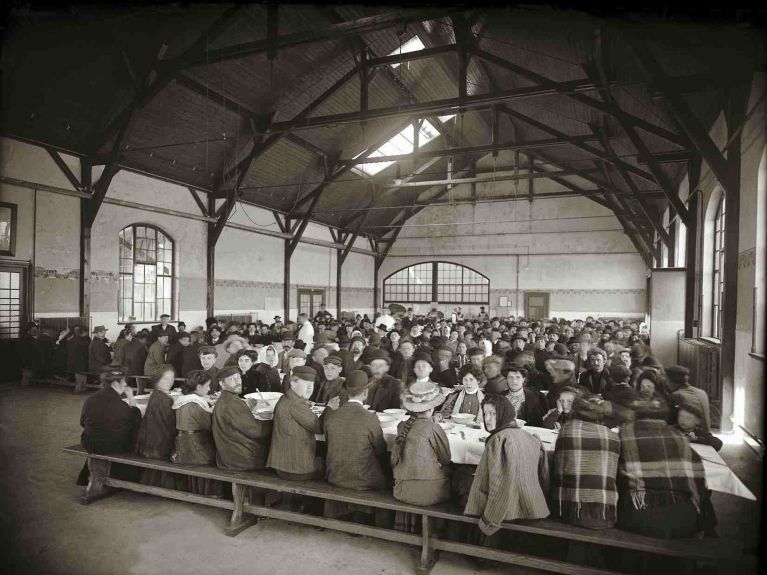America’s German roots
Germans are the largest immigrant group in the USA – and yet are the least visible.

There is virtually no other population group that has shaped the past of the USA quite as strongly as German emigrants, with almost seven million of them making their way to the New World over the course of four centuries. Currently 40 to 60 million Americans cite “German” as their primary origin and thus represent the largest immigrant group – even greater than those descended from Irish and Italians.
German emigration to the USA began at the end of the 17th century when Germany was suffering from the after-effects of the bloody religious conflicts of the Thirty Years’ War, and Christian minorities were being persecuted. Many farmers lived in poverty, their very existence threatened by failed harvests and land shortages, so many decided to leave for a country that appeared to offer both freedom and prosperity. That country was America.
In 1683 a group of 13 orthodox Quaker families from Krefeld left for New England, where they founded Germantown, the first closed German settlement, which is now a suburb of Philadelphia. They were followed in 1709 by 13,000 peasant farmers from the Palatinate, hence they were known as the Palatines. Rumour had it that the Queen of England would gift them land, but this proved to be just that – a rumour. In the end, 3,000 made it across the Atlantic and settled in what is now Albany, New York.
Dieses YouTube-Video kann in einem neuen Tab abgespielt werden
YouTube öffnenThird party content
We use YouTube to embed content that may collect data about your activity. Please review the details and accept the service to see this content.
Open consent formA new life in “the land of the free”
The situation in Germany worsened when the start of industrialisation caused the population to grow dramatically. In the mid-19th century, around three quarters of farmers did not have enough land to make a living, hence they began migrating in huge numbers from 1816 – the start of official German mass emigration to the USA. The opportunities seemed too good to be true: A peasant farmer who had to survive on half a hectare of land in Germany could acquire 64 hectares after just ten years in the United States.
A lack of political prospects was also a motivational factor behind emigration. For many people, the failure of the Revolution of 1848 represented proof that common people were unlikely to gain any rights to freedom in Germany anytime in the near future, and as a result, many members of the left-wing liberal middle classes and their supporters emigrated to the USA – the so-called “48ers”.

Mobile and well-integrated
Once in the USA, the Germans initially established themselves as a respected immigrant group, classic “hyphen-Americans” with dual identity. Countless communities developed with schools, churches and clubs, in which the German language and culture was preserved and cultivated. As advanced industrialisation took hold in the USA, German-Americans were among the most established groups of the population, both in farming and among the new blue-collar professions.
Their early presence among the new industries also led to Germans becoming more mobile than virtually any other group. They were less tightly concentrated in individual regions than other immigrants and spread across the country working as foremen in railway construction, for example.
The image of those with German roots changed abruptly upon the outbreak of the First World War. All of a sudden, they came under pressure to cast off their ethnic identity. Full-blown anti-German hysteria meant that the German language and culture were ostracised.
Thus, a process was set in motion which made German immigrants unique among all the major immigrant groups, and which was further fuelled by the Second World War – the almost complete erosion of their original identity. No other group lost its public visibility to quite the extent of the German-Americans during the course of the 20th century.

After the Second World War, the USA remained an important destination country for new groups of German emigrants. These included the fiancées and wives of American soldiers who had been stationed in Germany, as well as an increasing number of academics and highly qualified professionals. They still form the most important group of German immigrants in the USA today.



